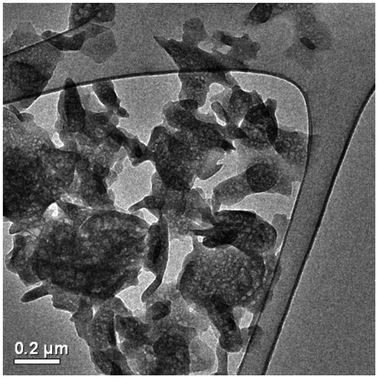 Open Access Article
Open Access ArticleCreative Commons Attribution 3.0 Unported Licence
Correction: Sustainable pathway to furanics from biomass via heterogeneous organo-catalysis†
Sanny Vermaa,
R. B. Nasir Baiga,
Mallikarjuna N. Nadagoudab,
Christophe Lenc and
Rajender S. Varma*a
aSustainable Technology Division, National Risk Management Research Laboratory, U. S. Environmental Protection Agency, MS 443, Cincinnati, Ohio 45268, USA. E-mail: varma.rajender@epa.gov; Fax: +1 513-569-7677; Tel: +1 513-487-2701
bWQMB, WSWRD, National Risk Management Research Laboratory, U. S. Environmental Protection Agency, Cincinnati, Ohio 45268, USA
cSorbonne Universités, Université de Technologie de Compiègne, Compiègne, France
First published on 11th February 2025
Abstract
Correction for ‘Sustainable pathway to furanics from biomass via heterogeneous organo-catalysis’ by Sanny Verma et al., Green Chem., 2017, 19, 164–168, https://doi.org/10.1039/C6GC02551J.
The authors regret that Fig. 1d was incorrect in the original publication. The aspect ratio of the image in the original paper had been modified inadvertently. The corrected version of Fig. 1d is presented below, which is also used in the ESI as Fig. S3.†
In addition, the text referring to the morphology and crystallinity of the recycled catalyst has been removed from the final paragraph before the conclusions, which should read “It was imperative to evaluate the stability of the catalyst in recycling experiments using fructose as the model substrate. The reaction of fructose in water at 100 °C gave the formation of HMF. After the reaction, the catalyst was separated by filtration/centrifugation, washed with acetone and re-used for the next cycle with the fresh reactants. The catalyst was found to be active after three cycles”.
The Royal Society of Chemistry apologises for these errors and any consequent inconvenience to authors and readers.
Footnote |
| † Electronic supplementary information (ESI) available. See DOI: https://doi.org/10.1039/c6gc02551j |
| This journal is © The Royal Society of Chemistry 2025 |

